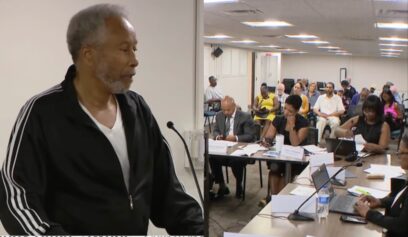
A 2017 study called “Up from Slavery? African American Intergenerational Economic Mobility Since 1880” traces back the income data of fathers and sons to 1880, which marked 15 years after the Civil War’s end. Authors William Collins and Marianne Wanamaker analyzed data from 1880 to 2000 to get a clearer look at which families achieved upward mobility in the years after the Civil War and which ones remained stagnant or even lost wealth. Bloomberg columnist Noah Smith found the results shocking.
“The racial differences they find are stark,” Smith noted. “For essentially all of recorded American history, poor white families were far more likely to escape poverty than poor Black families. Although the Black-white income gap did narrow over this time, the difference in mobility kept it from fully closing.”
The study found that white children were much more likely to escape the lower classes than black children were in every generation. The researchers said this mobility gap proved stronger than the parents’ original class status.
Today, black families have an average wealth of $95,261, compared to a whopping $678,737 in average wealth for white families, the Economy Policy Institute found.
Like Collins and Wanamaker, the EPI points the finger at housing discrimination, redlining and restrictive covenants for creating this wealth gap, as they largely prevented Blacks from entering the land-owning class. The studies also point out how redlining, or refusing loans to people deemed to live in “financially risky” neighborhoods or giving them high-interest loans instead, has continued despite federal intervention.
“During the housing bubble that was the disastrous run-up to the Great Recession, the exposure to predatory, high-interest, and high-leverage mortgages led to an absolute wealth disaster for African-American families when the bubble burst,” explained the EPI’s Janelle Jones. “In the aftermath of the bubble’s burst, black unemployment rates rose to levels twice as high as white unemployment, leading to higher rates of delinquency and foreclosure for black families. And the sluggish recovery has only made matters worse, as home values recover at different rates across racial lines.”
Redlining makes it difficult for Black people, even those in the professional class, to leave low-income neighborhoods. A 2016 study called “Pockets of Poverty: The Long-Term Effects of Redlining,” by Ian Appel and Jordan Nickerson, looks at the legacy of redlining dating back to 1940. It found that 50 years later, homes in redlined neighborhoods had 4.8 percent less value than homes in neighborhoods not plagued by discriminatory mortgage lending.
“That 5 percent figure may seem like a modest difference, but it only represents one specific type of discriminatory policy at one point in time,” argues Bloomberg columnist Smith. “The sum of all such policies is probably quite a bit larger. This paper doesn’t include the long-term effects of black Americans being forced into bad neighborhoods. But other economists have studied this. An experimental program in the 1990s called Moving to Opportunity gave poor people vouchers to escape their neighborhoods. This resulted in considerably higher income, as well as improved well-being by a variety of measures.”
Of course, Blacks anecdotally know how racist lending practices have hurt their communities and pocketbooks alike. But for those who doubt the lingering effects of longtime discrimination or are unaware of the effects of predatory mortgage lending practices in the years leading up to the Great Recession, this body of research puts matters into perspective. It also strengthens the argument of The Atlantic’s Ta-Nehisi Coates, who demonstrated in his seminal essay “The Case for Reparations” how discrimination in housing and other key areas of life effectively prolonged slavery for decades after President Abraham Lincoln signed the Emancipation Proclamation. To put the racial gap into perspective, it’s helpful to look at the findings of the EPI’s report “The Racial Wealth Gap: How African-Americans Have Been Shortchanged out of the Materials to Build Wealth.”
“The typical black family with a head of household working full time has less wealth than the typical white family whose head of household is unemployed,” the Institute found. “This outcome holds for black families regardless of the time and money spent on educational upgrading. Median wealth for black families whose head has a college degree, for example, has only one-eighth the wealth of the median white family whose head has a college degree. Even the typical black family with a graduate or professional degree had more than $200,000 less wealth than a comparable white family.”
It seems in America that even when Black people who do all of the “right” things — earn a college degree, land a professional job and buy a home — they still can’t catch up to whites who’ve achieved far less. That’s a case for reparations indeed.


